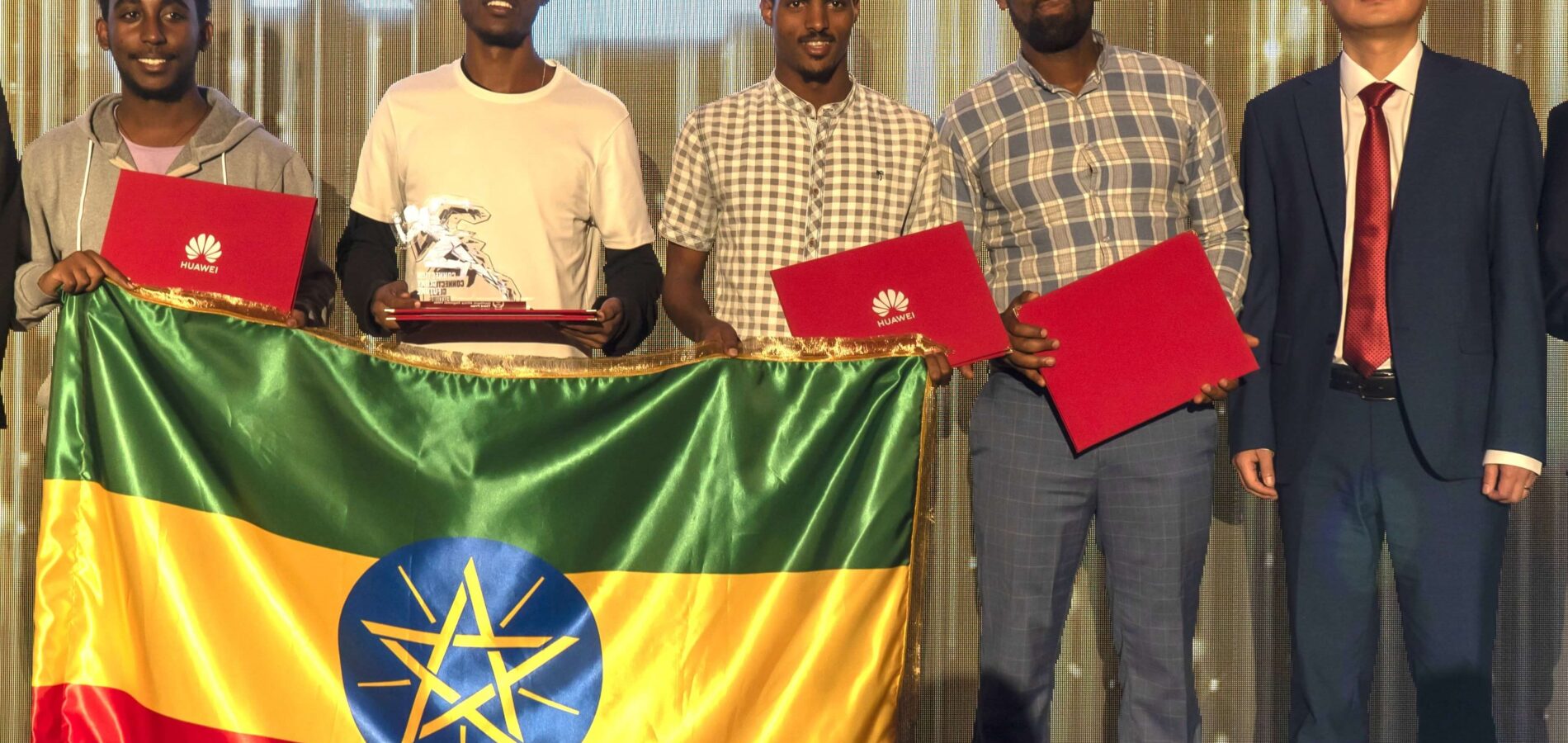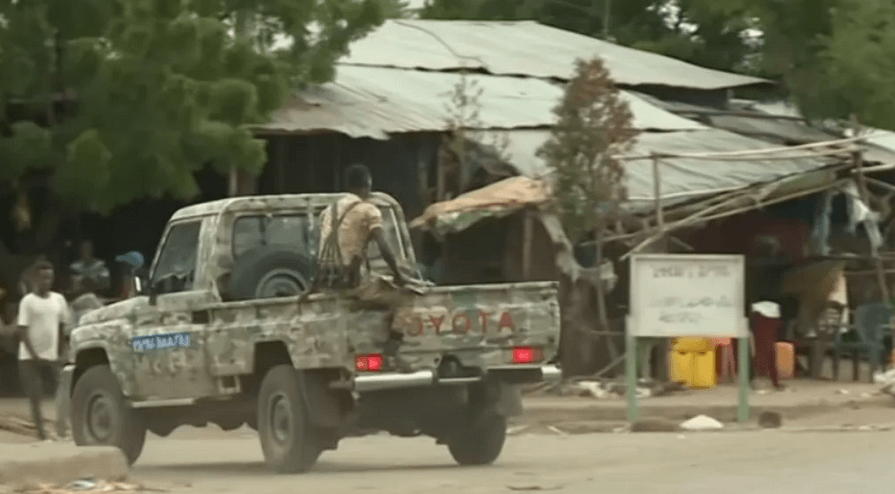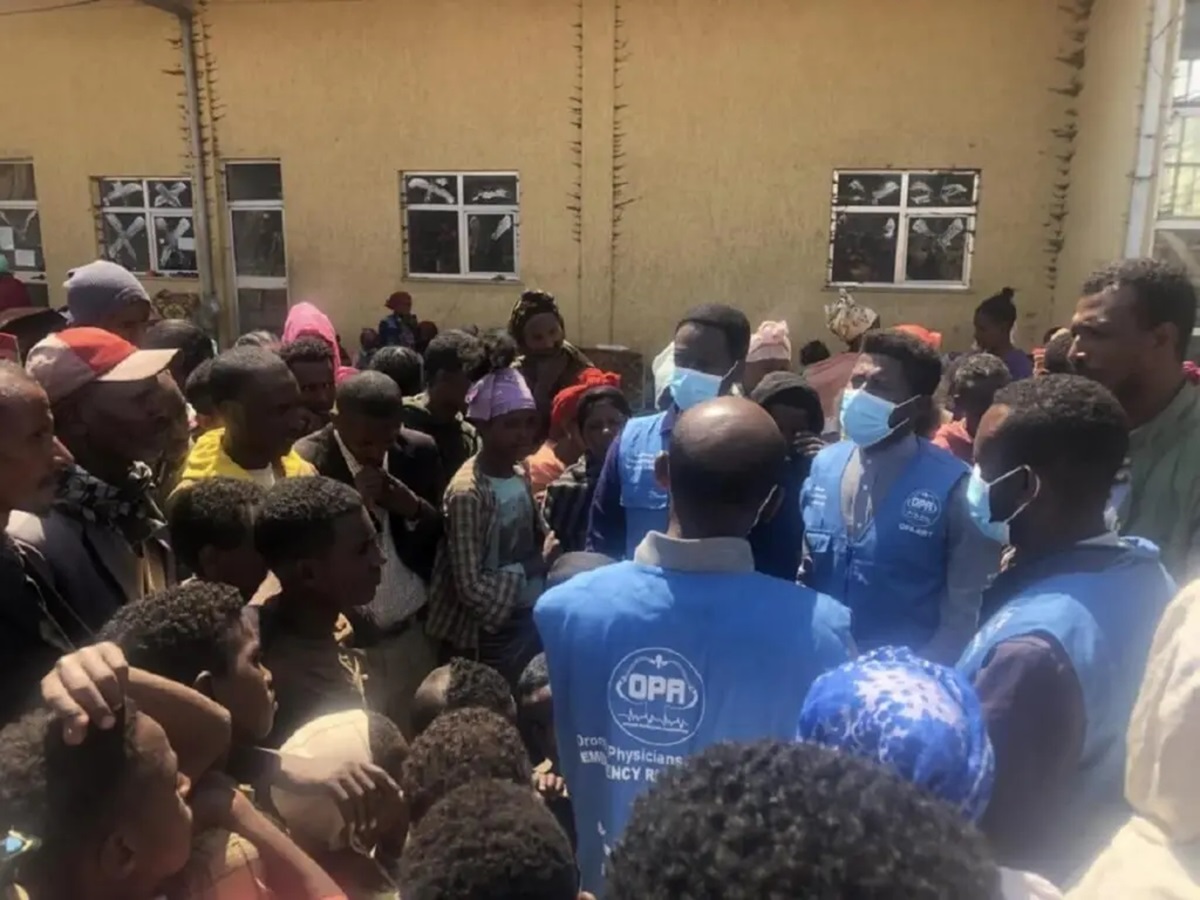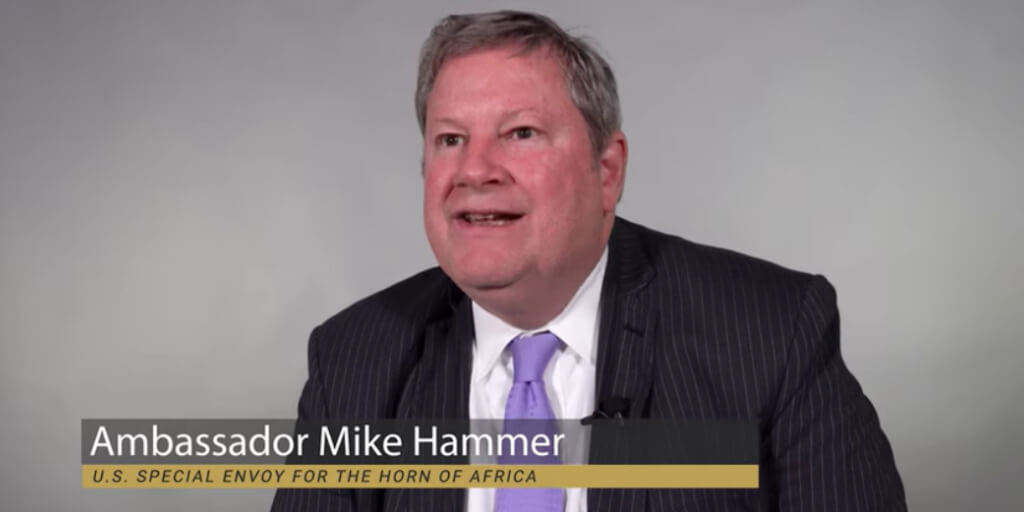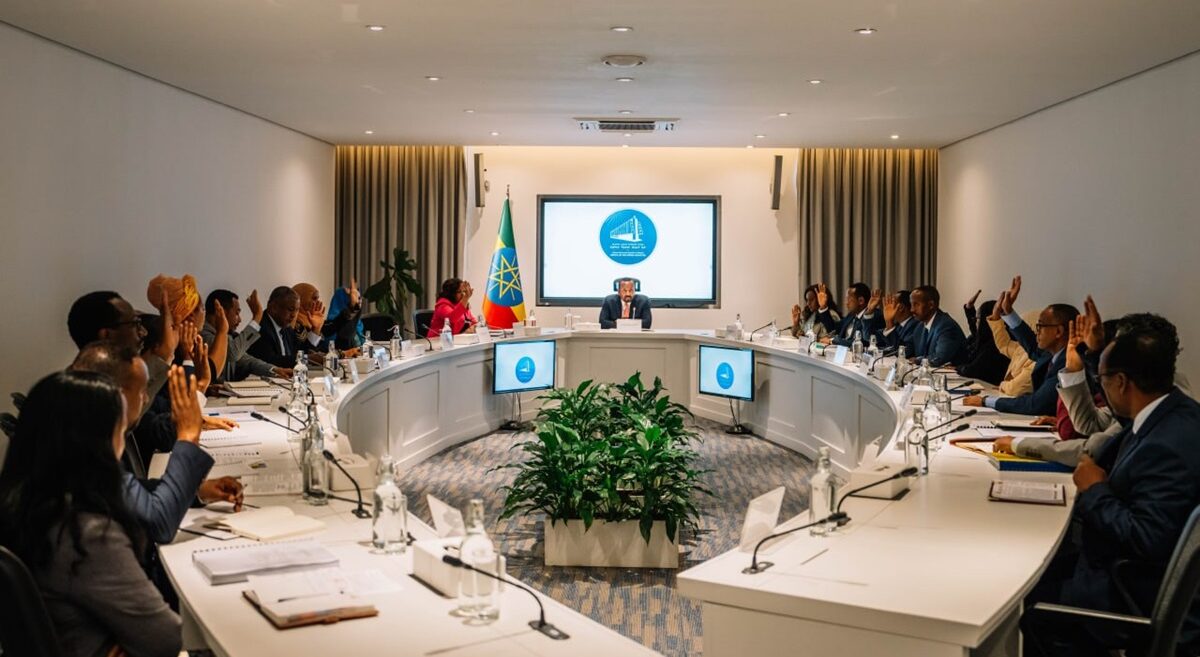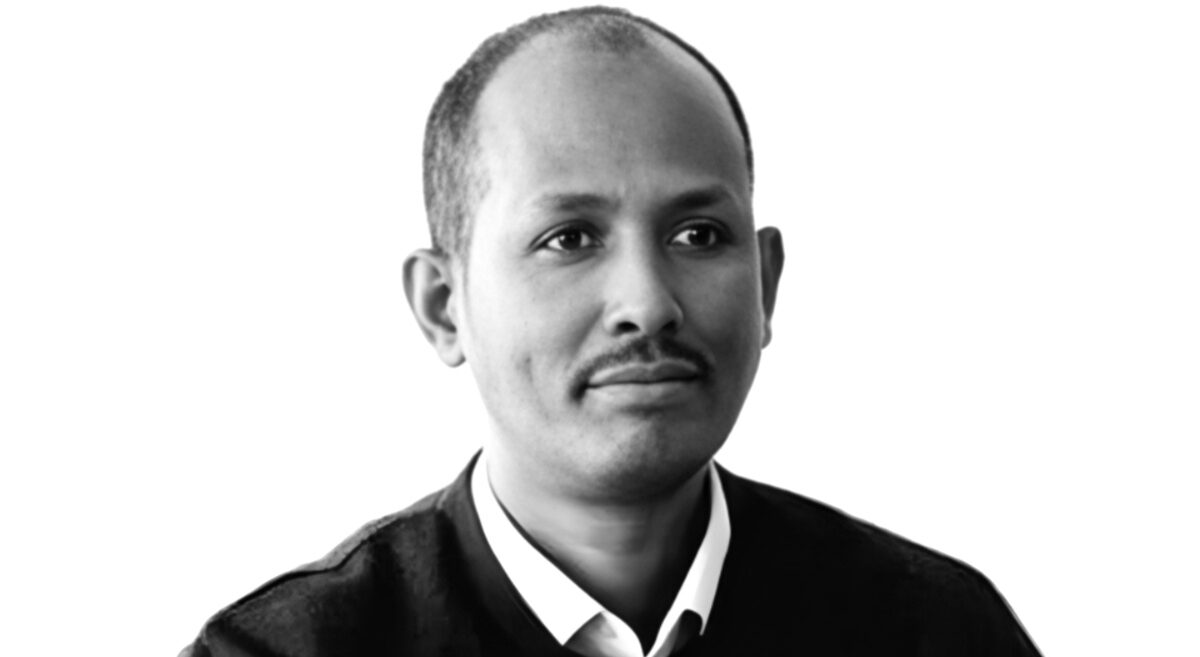Between July 12th and 14th more than a dozen people were killed in a protest in Gondar, northern Ethiopia, that followed a raid by heavily armed federal security forces, including the Anti-Terrorism special force, targeting members of the Wolkayit community who have been protesting against the federal government’s decision to incorporate the area where the community lives into the Tigray regional state. The Wolkayit community members also reject the idea of them being ethnically considered as Tigrayan and want to identify themselves as Amhara.
The government said 11 of its security forces were killed during a shootout between members of the community and security forces. Several eye witnesses put this number, including the number of civilians, at more than 20. Many cars belonging to the government were set ablaze and businesses considered to be affiliated with the Tigray People Liberation Front (TPLF), the all too powerful party within the ruling EPRDF, were vandalized by protesters, sparking, although unfounded, fears of ethnic violence.
After a negotiated surrender to the local police of Colonel Demeke Zewdu, the leader of the “Wolkayit Committee” who has represented the community to lodge complaints both at the regional and federal governments, calm seems to have returned to the city of Gondar, a historic city home to thousands of tourists every year. But many fear the federal security forces’ attempt to take the colonel into its custody may spark further resistance from members of the community and residents of the city at large.
Addis Standard interviewed Tsegaye R. Ararssa of the Melbourne law school and a constitutional law expert, on the genesis of the Wolkayit question and what lies ahead. Excerpts:
Addis Standard – If you can please explain to our readers the genesis of the recent protest in Gondar in Amhara regional state? What lies at the heart of the matter?
Tsegaye R. Ararssa – The protest has its roots in the decisions made in the 1990s when the area was first incorporated into Tigray region as part of the larger TPLF-EPRDF scheme of restructuring the Ethiopian state, devolving power to self-governing regional entities, and recognizing the right of “nations, nationalities and peoples” to self-determination (Proc No 7/1992). When Tigray was reconstituted as Region one, this area, which hitherto had been part of Gondar Province, was made part of Region one and formed what came to be known as the Western Province of the Regional State of Tigray. The Federal Democratic Republic of Ethiopia (FDRE) constitution of 1995 endorsed that by the simple acceptance of Region 1 as the Tigray Region, also known formally as the ‘Tigray National Regional Government.’ The boundary was taken for granted. No discussion was made about the boundaries. No consideration of the will/consent of the people was made. No consideration of the settlement pattern was made; if anything, it was ignored especially in this locality. Nor were the identity and language patterns of the area. This stood in stark contrast to what the constitution (in its article 46) prescribes for delimitation of inter-regional boundaries.
AS – Can you explain these factors that lay out the delimitation as per the constitution?
TA – According to art 46 (2) of the FDRE Constitution, four factors: settlement pattern, consent, identity, and language, are the factors to consider in the process of delimiting states. As it is well known, as a frontier area, three languages are commonly spoken in the area: Amharic, Tigrigna, and Arabic. But the vast majority of the people there identify themselves as Amhara. This is as true as it is today, although there was a massive Government-driven Tigryan settlement in the area since the 1990s. The settlement is presumed in some circles as a TPLF strategy of diluting the demographics of the area, but the majority still seem to identify themselves as Amhara nonetheless. And the settlers, most of whom are former TPLF fighters that were demobilized after 1992, view themselves as Tigryan settlers. In short, like everywhere else, the criteria of delimiting regions in art 46 (2) were ignored, and we, as a country, continue to bleed from the reckless delimitation that was done then. The current conflict is an example of the problem of TPLF-EPRDF failure to deliver its own constitutional promises.
AS – When did the people of the area start protesting against this arrangement?
TA –The arrangement was rejected by the local people from the very start. The people protested the decision then, but their protest was ignored by the TPLF dominated EPRDF government and was submerged at the national level by several other political issues (such as the Eritrean referendum, the precarious peace among the parties that “negotiated” the transition, emergence of low-profile local conflicts among various groups, etc) that proliferated in the face of the state crisis. However, it persisted as a low key, intermittent, ad hoc, if disorganized, resistance to the regime. It is important to note, incidentally, that the resentment was openly expressed in the society through local songs in the area and in the wider Amhara region for the last two decades and a half. (In most of these Amharic songs, the names of the towns and villages in the area were invoked as part of Gondar as they used to be before the ascension to power of TPLF-EPRDF. Fasil Demoz’s song is only one example.
AS – but the government maintains the current crisis was orchestrated by Eritrean based rebel groups with the support from the Eritrean government.
TA –The genesis of the current crisis has its roots in not paying attention to the identity, consent, settlement pattern, and language of the people of the area in the process of delimiting the region. And this is not accidental. Many people from the area consider it as part of the TPLF’s ambition to impose Tigryan hegemony both in the region and in the wider country by incorporating and subsuming peoples in the periphery of its historic borders under Tigrayan political dominance. (The Raya-Oromo of the historical Wollo and the Afar of historic Afar are now incorporated into Tigray (and rendered totally invisible in the region). The Kunama and the Irob (also called Saho in some writings) are the other numerically small groups who, although part of the historic Tigray, were culturally and linguistically suppressed and rendered invisible in the region struggling even to assert a Woreda-level self-government.) There is also the view that the TPLF wants to take economic advantage of the relatively more fertile nature of the land in the area.
AS – What changed in recent years? How did the protest gain momentum?
TA – In recent years, the hitherto sporadic, fragmented, and disorganized resentment gathered momentum and found an organizational expression through the “Wolkayit Committee” that launched a legal campaign of self-definition by recognizing their distinct identity as Amharas. They believe they are wrongly placed in Tigray region. They presented their claim at various levels of governance: at the levels of District, Zone, State, and Federal Governments. The central claim of their demand is the right to self-definition as Amhara rather than Tigryan. They relied on art 39 of the Federal Constitution and its regional equivalent. Apparently, they took self-definition, rightly, as a form of self-determination.
The demand for self-definition was however not an end in itself. Through self-definition, they sought to advance what is otherwise known as a demand for “ethno-cultural justice.” They sought to redress the neglect of their culture as Amhara (holidays, songs, dresses, styles, etc), the marginalization of their language (Amharic) as a medium of providing social services (e.g. education, administration, justice, etc), and their exclusion or severe marginalization in ‘representative’ political and administrative institutions. They also feel politically dominated by the Tigrayan majority that came up with a series of land laws that effected the transfer of land to Tigryan investors and settlers thereby increasingly displacing the indigenous inhabitants. The coordinators of the demand also suggest that there are social and local government pressure for the Wolkayit Amhara people to leave the land to the region and go. Implicit in their demand (so far unstated, I think) is the interest to be re-incorporated as part of the Amhara Region South of the border. This is seen as a form of irredentism that leaves Tigray at a disadvantage. The demand has thus activated the fear that this may lead to losing to the Amhara region, often perceived as their traditional rivals.
The grassroots mobilization and formal presentation of the demand provoked a political rage from the TPLF in the region and in the Federal Government. In the first place the regime failed the question primarily because of its undeclared aspiration to impose Tigryan hegemony both in the region and in the country. There is a Tigryan nationalist desire to expand the territory and entrench the power and privileges of the Tigryan nation. And they want to do this top-down undemocratically. That is the central problem.
Although legal resolution of the problem could have been easier, they resorted to political footballing (playing back and forth between the Region and the Federal government) and outright military violence—which has ultimately led to the recent uprising in Gonder. Consequently, the demand has been met with repressive violence almost at every turn. The coordinators, conscious residents, and activists have been routinely harassed and intimidated, arrested, detained, beaten or otherwise abused by local government officials. There are reports that several people – sometimes claimed to be over a hundred – are subjected to enforced disappearance in these localities. Their right to freely assemble, associate, and organize on the matter has been brutally suppressed. The coordinators complain that they couldn’t even hold a public meeting to gather petitions. They charge that their constitutional rights to freedom of assembly, association, petition, and more are consistently violated by the local and regional government. As a result, they had to rely on local self-help associations and restaurants, cafes, market places to have the petition signed. But they were followed by security officials wherever they go. They were even arrested in Addis Abeba while they were on a mission to submit their demand to the House of Federation (HoF).
The coordinators say that [they] had better freedom in the neighbouring Gonder city where they organized a couple of public meeting for the residents of the city as well as the people from their localities. Most of the mobilizers and the activists were in safer Gonder when the security forces came to arrest them on July 12th which provoked so much anger from the residents of the wider Gonder.
The outburst in Gonder should be understood in context: a long held resentment against the general frustration with the democratic exercise owing to the general closure of the political space and people’s deprivation of any avenue of having a say; the perceived privilege of Tigryans living in the city and in the wider country; the perceived cession of a legitimately Ethiopian (Gondere) territory to the neighbouring Sudan; the unfair economic exploitation of the area that historically belonged to Gonder; the perceived mishandling of the Qemant question and the trauma socially experienced because of the deadly conflict that ensued therefrom; and the long-held anger about the incorporation of the Wolkayit area into Tigray without their consent in the first place.
Following the recent protest, heavily armed security forces were seen roaming the city of Gondar. Photo: Social media
AS – The government is repeatedly saying the protest has nothing to do with Wolkayit’s identity question. But we have, if you like, a government that first introduced a federal system in which Ethiopia will be celebrated as a multi-nation state, but why do you think is this same government trying to distort the truth now and distance itself from it?
TA –The Ethiopian government is caught in a deadly paradox. On the one hand, it projects an image of a multinational federal state in which, at least in theory, ALL groups have the right to self-determination. On the other hand, it subscribes to a political practice that represses all rights of groups as well as individuals. Denial of group rights is often justified on the basis of the wrong claim that the question of group rights (alias known as the National Question) is fully and finally addressed through the constitution in 1995. Denial of individual rights is often justified in the name of ‘legal limits’ or by claiming that the violation of the result of lack of good governance, development, and the imperfection of a young democracy. The contradiction between its projected image and its political practice, the tension between the legal rhetoric and the political reality, couldn’t anymore be contained. Hence, the almost total inability to address just demands of the people. The contradiction demonstrates the unsustainable tension between the pretension of the regime to practice “democratic federalism” on the one hand and its abysmal performance in ensuring democratic opening and in enhancing federalist accommodation of diversities. The failure to address this issue is the final and perhaps the most conclusive example of the limits of the regime pretension both in terms of democratizing the state and decentralized exercise of state power.
AS – There are voices that strongly claim that the aftermath of the protest (the burning of buses and business establishments belonging to a particular ethnic group – the Tigrayans in Gondar) is, in the first place, the result of the current Ethiopian constitution that introduced what’s commonly known as “ethnic federalism.” As an expert on constitutionalism, what’s your take on that?
TA – No, if anything, it is refusal to implement the promises of multinational federalism that led to this crisis. It seems to me that the crisis is caused by the absence of federalism of any sort rather than too much of it as the regime’s critics say. If the regime adheres to the type of federalism that it proclaimed, responding to the demands of self-definition would have been the simplest of responsibilities to discharge. In multinational federalism one has more resources than could address the right to self-definition and preservation of one’s local, ethnic, or national identity. If anything, this is a demonstration of the need for a more aggressive implementation of the right to self-determination that the Ethiopian multinational federation endorses. Negatively, it exposed the regime’s democratic pretensions thereby showing how a federalism without democracy becomes an instance of the abuse of cultural pluralism. It confirmed to us the pattern that suggests that without democracy, federalism tends to degenerate into ‘bad’ pluralism (among which apartheid is an outstanding example).
AS – Once again, the government seems to have hit another dead end with the people of Ethiopia, this time through the people of Wolkayit. What should the government do next to deal with the people of Wolkayit?
TA –Yes. It could have handled it better. It had all the constitutional-legal resources it could deploy to handle it better. The solution is not easy but fairly uncomplicated: first, restore peace. Release the activists. Remove the army. Stop the harassment, the arrest, and enforced disappearances. Secondly, allow the people to decide on their identity (if they are Amhara or Tigray). This can be done by a referendum as per the words of the constitution and Proclamation 250/2001. This satisfies the question of self-definition. The demography settles it. The option that gets most of the votes will win. Thirdly, allow the people to decide to which region (Tigray or Amhara) they want to be incorporated into. If the decision of the majority is to be part of the Amhara region, then deal with the issues of inter-state borders and issues related to that. If the decision is to remain in Tigray, then deal with the issue of the rights of those who wanted out. If the decision is to be by themselves, then, depending on whether they submit a demand for a separate statehood in the federation, conduct another referendum to decide on statehood. Whichever way you want to go, the basic principle is simple: listen to the demands of the people and respect their choices. Period.
Cover Photo: Protesters set ablaze a Bus belonging to “Selam Bus” a transport company many claim is affliated with TPLF. Photo credit: Social media




